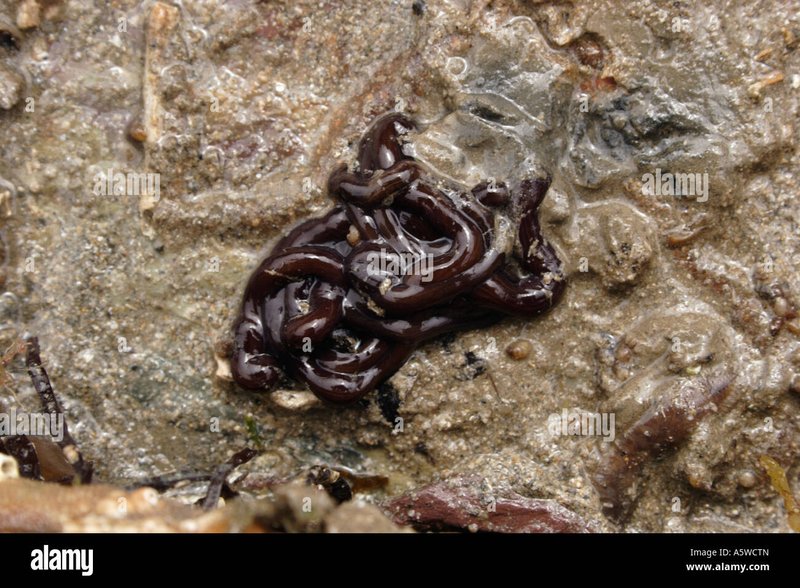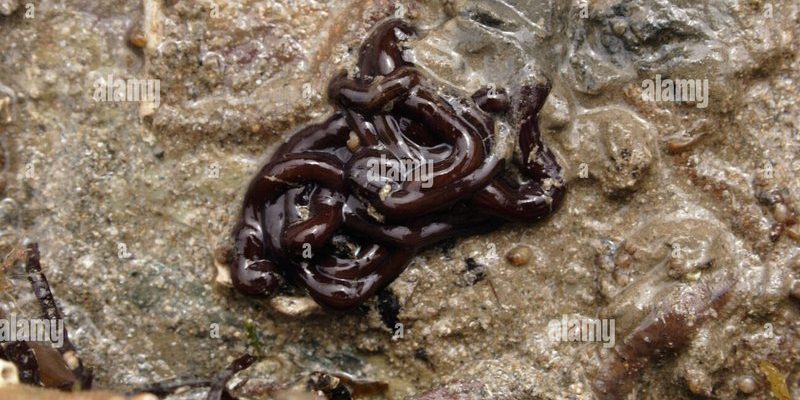
Bootlace worms have a unique way of interacting with their environment, making them a key player in rocky shore ecosystems. They’re not just hanging around for show; their actions help maintain the balance of their habitats. So, grab a cup of coffee, and let’s dive into the intriguing world of bootlace worm behavior and how they thrive in rocky shorelines!
What Are Bootlace Worms?
Before we get into their behavior, let’s clarify what bootlace worms actually are. These worms belong to the group known as **Nemertea**, or ribbon worms. They have an impressively long body—some can stretch up to **30 meters** (about 98 feet) in length! Imagine a spaghetti noodle, but much more colorful and alive. Their bodies are soft, yet they possess a unique ability to regenerate, which means if they lose a part of their body, they can grow it back. Isn’t that mind-blowing?
Bootlace worms are usually spotted clinging to rocks or buried in sand. Their bright colors—shades of red, blue, and yellow—might look pretty, but they serve a purpose. These colors often act as warnings to predators about their toxicity. So, when you see one of these vibrant creatures, remember that they’re more than just a pretty face; they’re equipped for survival in their rocky domain.
Habitat Preferences of Bootlace Worms
Bootlace worms thrive on rocky shorelines, but what makes this environment so special for them? For starters, rocky shorelines provide plenty of **hiding spots** and **feeding opportunities**. The nooks and crannies of the rocks offer shelter from predators, while also creating a perfect hunting ground for these worms. It’s like living in a cozy apartment filled with endless takeout options!
They’re most commonly found burrowing into the mud or sand in these areas. The combination of rocky surfaces and the presence of organic material gives them the ideal setting to hunt for food and avoid detection. They primarily feed on small invertebrates and detritus. They use a specialized feeding mechanism known as a **proboscis**, which they can extend to capture their prey quickly. Imagine a fishing line that can shoot out in an instant—talk about efficient dining!
Feeding Behavior: How Bootlace Worms Hunt
Bootlace worms are skilled hunters, and their feeding tactics are quite remarkable. When they spot something tasty, they can rapidly extend their proboscis, which is a long, tube-like structure. This versatile appendage allows them to **capture prey** and draw it into their mouths with incredible speed. You might be wondering how they manage to find their food in such a bustling environment.
They use a combination of **sight and chemical detection** to locate their next meal. Bootlace worms have light-sensitive cells that can help them detect movement and shadows in their surroundings. This means they’re not just relying on their sense of touch; they’re also visually aware of what’s going on around them. Pair this with their ability to sense chemicals released by potential prey, and you have a worm that’s like a well-trained chef, knowing exactly when to pounce on the freshest ingredients!
Reproductive Behavior of Bootlace Worms
When it comes to reproduction, bootlace worms have some fascinating strategies. Most species can reproduce both sexually and asexually, which gives them a unique advantage in their rocky habitats. If conditions are right, they can simply split themselves in two to create a whole new worm. Think of it like cutting a cake—each piece can become a full-fledged dessert all on its own!
During the sexual reproduction phase, things get a bit more interesting. Bootlace worms will often gather in groups to engage in a flamboyant display of courtship. This behavior can involve vibrant color changes and some wriggling about, reminiscent of a dance party! Once they mate, the females will release their eggs into the water, where they’ll develop into larvae before eventually settling down to the rocky shores. It’s a life cycle that uniquely supports their survival and adaptation to changing environments.
Interactions with Other Marine Life
Bootlace worms don’t live in isolation; they interact with various other creatures in their ecosystem. They share their homes with crabs, fish, and an assortment of mollusks. These interactions are not always friendly. For instance, bootlace worms can sometimes become prey for larger fish, while also preying on smaller invertebrates. It’s a continuous cycle of predator and prey.
Moreover, bootlace worms contribute to the rocky shore ecosystem by aiding in nutrient cycling. As they consume organic matter and detritus, they help break it down, making nutrients available for other organisms. Imagine them as nature’s recyclers, ensuring that nothing goes to waste in their rocky neighborhoods.
Environmental Threats and Conservation Efforts
Like many marine species, bootlace worms face several threats due to changes in their environment. Pollution, habitat destruction, and climate change all jeopardize their survival. Changes in water temperature and acidity levels can affect their reproduction and feeding behaviors, making survival more challenging.
Conservation efforts are vital to ensuring the health of bootlace worm populations. Protecting rocky shorelines from pollution and habitat destruction is key. Many organizations are working to promote sustainable practices and educate the public on the importance of these unique creatures. By taking care of their habitats, we can help maintain the delicate balance of marine ecosystems.
Bootlace worms may not be the most popular marine creature, but their behavior and role in rocky shorelines are undeniably fascinating. From their unique hunting techniques to their complex reproductive strategies, there is much to admire about these colorful worms. By understanding their lives a little better, we can appreciate the intricate tapestry of life that thrives beneath the surface.
So next time you’re exploring rocky shores, take a moment to look closely at the vibrant life around you. Bootlace worms are just one of the many wonders waiting to be discovered. Let’s keep our shorelines healthy and vibrant for these remarkable inhabitants and all the other creatures that call the ocean home!

